
The Architecture of Prophet's Mosque Exhibition is overseen by the Agency of the Affairs of the Prophet's Mosque. It covers the history of the architecture of the Prophet's Mosque and the various stages it has undergone from the time of the Prophet Muhammad, peace be upon him (PBUH), to the era of the kings of the Kingdom of Saudi Arabia. It is located to the south of the Prophet's Mosque, covering an area of over 2,200 m 2 , and includes rare artifacts and modern technologi...
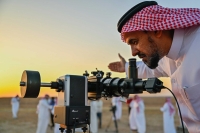
Tamir Observatory is one of the mobile observatories in the Kingdom of Saudi Arabia used for sighting the crescent moon of Hijri months. This practice has been conducted at the observatory since the 1920s. The observatory is located in the Tamir Center, in al-Majma'ah Governorate, in Riyadh Province. Among the well-known observers in Tamir are Ibrahim al-Barghash, followed by his son Abdulrahman, and then his grandson Mutaib. Tamir Astronomical Observatory Observers in Tamir used to sight ...
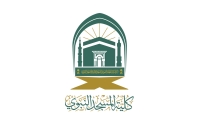
The College of the Prophet's Mosque is a scholarly Sharia college offering bachelor's degree programs within the Prophet's Mosque in al-Madinah al-Munawwarah, the Kingdom of Saudi Arabia. It aims to prepare students specializing in Sharia sciences. The college is supervised by the General Presidency for the Affairs of the Grand Mosque and the Prophet's Mosque. Inauguration of the College of the Prophet's Mosque The College of the Prophet's Mosque was first inaugura...
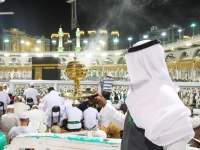
Perfuming and Fumigating the Grand Mosque is the process of spreading incense in the prayer areas of the Grand Mosque, and daily anointing the walls of the Kaaba, its covering, the Yamani Corner, and the Black Stone with various types of luxurious perfume. This practice is a manifestation of the reverence for the House of Allah and the Holy Kaaba. Method of Perfuming and Fumigating the Grand Mosque The process of perfuming the Black Stone and the Multazam with premium oud oil is repeated five t...
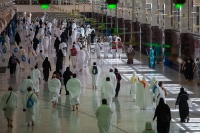
Al-Mas'a is the place where Hajj pilgrims and Umrah performers perform the ritual of Sa'i between the hills of Safa and Marwa. It is located to the east of the Grand Mosque in Makkah al-Mukarramah, the Kingdom of Saudi Arabia. The Sa'i is performed in laps different from those of the Tawaf around al-Kaaba al-Musharrafa. Walking from Safa to Marwa is counted as one lap, and walking back from Marwa to Safa is counted as another lap, continuing in this manner until completing seven ...
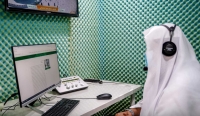
The General Authority for the Affairs of the Grand Mosque and the Prophet's Mosque has dedicated a Department of Languages and Translation, providing translation services to pilgrims inside the Grand Mosque and the Prophet's Mosque in numerous global languages. These services are offered through various programs, applications, and electronic platforms serving visitors, worshippers, and pilgrims, including guidance, answering questions, direct translation of sessions and lessons, and d...
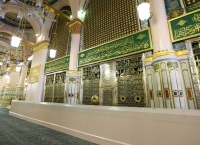
The Sacred Prophet's Chamber is the place where Prophet Muhammad, peace be upon him (PBUH), lived with his wife, Aisha Bint Abu Bakr (may Allah be pleased with them). He passed away and was buried there. It consists of a room and a chamber. The room represents the roofed part of the house, where the Prophet (PBUH) and his family slept. The chamber refers to the unroofed part of the house, located in front of the room. The chamber consists of: The grave of the Prophet (PBUH), located to the...
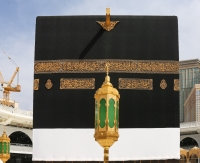
The comprehensive restoration works of al-Kaaba al-Musharrafa during the reign of King Fahd Bin Abdulaziz Al Saud in 1996 were preceded by several procedures that served as preliminary steps for starting the reconstruction of al-Kaaba in the largest restoration operation during the Saudi era. These procedures included: 1. Removing the tiles from the walls of al-Kaaba. 2. Inspecting the exterior wall of al-Kaaba. 3. Numbering the interior stones of al-Kaaba to return them to their original place...
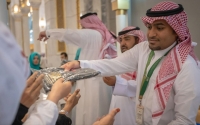
Yes, through several programs, including the Pilgrim's Gift Program, organized by the Ministry of Islamic Affairs, Dawah, and Guidance in cooperation with the General Authority for the Affairs of the Grand Mosque and the Prophet's Mosque. This gift includes a package containing an audio tape of exceptional Quran recitations and four books that explain the pillars of Islam, faith, and excellence, as well as education, values, noble ethics, and the principles of Sharia and creed. The Cu...
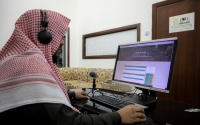
The Electronic Maqraa Platform is one of the projects of the General Authority for the Affairs of the Grand Mosque and the Prophet's Mosque in the Kingdom. It aims to teach Muslims around the world the correct recitation of the Holy Quran. The features of the platform include: Teaching beneficiaries the correct recitation. Teaching the Holy Quran from the Two Holy Mosques. Implementing the best methods for teaching the Book of Allah. Relying on specialists in Quranic sciences. Teaching and...
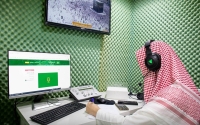
The Department of Languages and Translation at the Grand Mosque in Makkah al-Mukarramah is responsible for several specific mandates to facilitate the service of pilgrims, visitors, and Umrah performers. These mandates include: Responding to inquiries. Direction and guidance. Direct translation of sessions and lessons. Deploying translators throughout the Grand Mosque who speak twenty-one languages. Providing sign language interpreters for people with disabilities. Translating sermons and lesso...
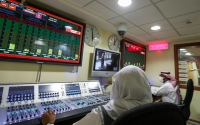
The sound systems in the Grand Mosque in Makkah al-Mukarramah are distinguished by several features that set them apart from most other systems. These features include: Connection to over seven thousand speakers. An error rate not exceeding 0 percent. Use of highly sensitive microphones. Daily sound balance adjustments. Connection to two control rooms for managing the sound systems and their components. Being considered among the largest and most advanced sound systems in the world. ...